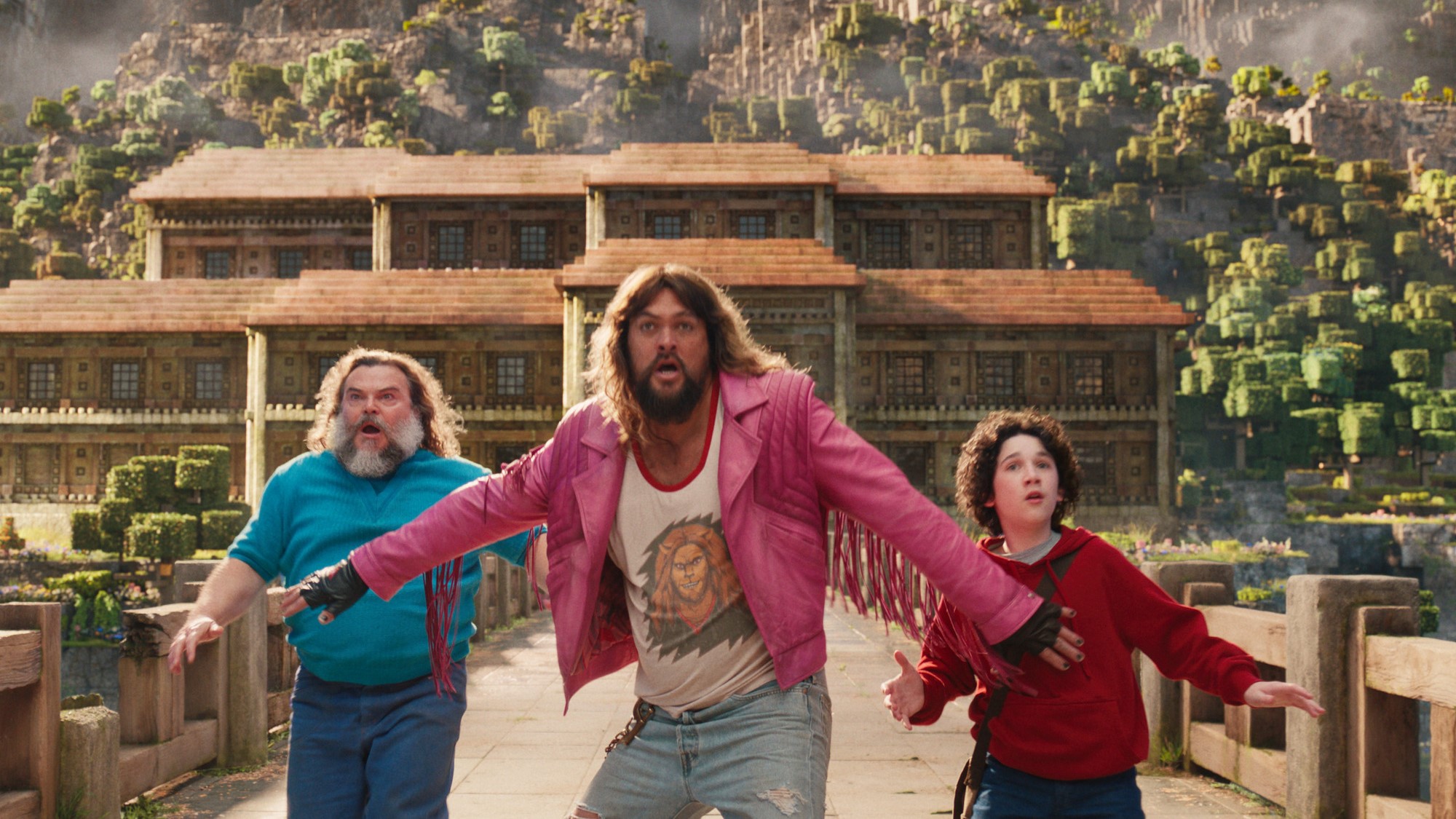'TRON: Legacy,' a trial run on perfecting fan service formulas
Ten years later, 'TRON: Legacy' remains a brilliant cautionary tale for studios eager to dust off aging intellectual property.

Ten years ago today marks the last time I was truly excited about a new movie — in retrospect, probably a good indicator that it wasn’t destined to be a success. Personally speaking, TRON: Legacy was a fulfillment of both childhood dreams and adult tastes, a thrilling, emotional adventure in a world that I loved helmed by a visionary director with a score by one of my favorite musical artists. Since Joe Kosinski premiered TR2N at San Diego Comic-Con in 2008, I covered every scrap of breaking news; performed every interview I could; documented each new piece of advertising or promotion; and even visited the set, where at one point I literally ignored an interview with future crush Olivia Wilde to speak casually off the record with one of the members of Daft Punk who were coincidentally hanging around. By December 2010, my excitement, prodded by a love for the original Tron since I first watched it in a giant white clamshell VHS case, had reached fever pitch.
Unfortunately, that also became the year that movie studios discovered the bracing reality that my intense but very specific enthusiasm did not always translate to the kind of all-audiences ticket sales needed to subsidize the resuscitation of any old piece of intellectual property. As a movie, TRON: Legacy’s merits have only deepened for me in the intervening years, recognizing not only the parallels in structure and themes from the original films, but the strokes of invention and originality that make it such a striking piece of entertainment. But at a time in which rights owners are now turning every last bit of canonical detritus into a new story, series or franchise, this jewel in Walt Disney Studios president of production Sean Bailey’s then freshly-appointed crown felt like Exhibit A in a growing stack of evidence that studios had overspent and underprepared to tap into the exploding but still wildly unpredictable fan service market.
Watching the film now, not only is it just a stunning achievement in production design, cinematography, and visual effects (including a computer-generated Jeff Bridges), but an extremely skillful update of the plot and themes of the 1982 original — so much so that I really believe audiences needed no prior knowledge of it to appreciate the new one. Although Kosinski was untested as a storyteller, he creates some understated, truly powerful moments between young Sam Flynn (a hunky, underrated Garrett Hedlund) and his bohemian tech-giant father Kevin (Jeff Bridges) even while delivering one indelible image of this world within the computer after the next. Moreover, he creates an instantly-iconic female hero in Quorra (Wilde), whose formidable physicality and clear-eyed enthusiasm lends a delightful freshness to the main ensemble while avoiding women-warrior clichés.
After Disney surprised Comic-Con with Kosinski’s TR2N proof-of-concept film in 2008, interest grew precipitously among fans who either liked the original film or simply thought it was cool footage of a world they would like to see more of. During this time, superhero movies began booming in a way they hadn’t in over a decade; they were far from the cornerstone of studio release schedules that they are now. But in the wake of the release of The Dark Knight and the inception of the Marvel Cinematic Universe with Iron Man and The Incredible Hulk, development deals began exploding to get comic-related properties into production, thinking first that this was an untapped reservoir of properties that these screaming fans in Hall H — meaning all of them — loved, and second that their purchasing power led and inevitably translated to ordinary audiences who would follow them eagerly into theaters on opening weekend, producing one blockbuster and potential new franchise after another.
The next few years proved only to be a bonanza — for convention attendees, anyway. The studios brought their biggest talent to stages across the country but especially to Comic-Con, where more sites than ever breathlessly reported every second of footage or conversation that was intimately “shared” with fans. Unsurprisingly, the experience produced a deluge of news stories, highlight reels, and updates for pundits and armchair experts alike to speculate about and discuss. But it took a little while for studios to realize that success in Hall H didn’t carry over to success once the films were released to general moviegoers.
And so, studios repeatedly gambled big, and lost: Kick-Ass was among the most talked-about films at Comic-Con 2009, but its commercial success in spring 2010 was mitigated largely by initially modest production costs. Edgar Wright led fans through the streets of San Diego like Comic-Con’s pied piper to a screening of Scott Pilgrim vs. the World just weeks ahead of its international release, the kind of event that should have propelled it to massive box office success — but did not instill interest outside the select few who rapturously received it. And after a promising presentation in 2010 followed by a screening of footage at Wondercon 2011, convention royalty Jon Favreau premiered Cowboys & Aliens at Comic-Con 2011, only for that movie to prove a financial disappointment for Paramount.
In the middle of those was TRON: Legacy, whose $400 million worldwide made it successful at a moment before relying on international grosses became a more concrete component of a film’s release strategy. But as one of the most expensive of these films not just promoted at Comic-Con but whose existence owed a tremendous debt of gratitude to cheering fans at conventions, it became the canary in the coal mine telling studios not to overspend promoting their films at the annual San Diego event, much less on properties whose appeal likely won’t reach further than the front doors of the showroom floor. Mind you, that doesn’t mean that these films are or were bad — my feelings about Kosinski’s film are pretty clear, but Scott Pilgrim, for example, is nothing short of an extraordinary achievement itself. But their failure to connect with mainstream audiences essentially reconfirmed some long-held truths about how many nerds were lurking among the rest of the moviegoing public, just waiting to pour their money into any and every adaptation set in front of them.
Get the What to Watch Newsletter
The latest updates, reviews and unmissable series to watch and more!
At least, that was the lesson — until the MCU, and then the DCEU, and the Star Wars Cinematic Universe transformed the idea of loving a property into an all-consuming lifestyle, and a sustainable one at that. Supporting corporate entities overtook supporting characters overtook supporting reliable storytellers, or maybe they just all became interchangeable with one another. But despite Disney’s best efforts to force its surrounding mythology upon an unwilling public, TRON: Legacy has only limped forward in new incarnations — all which I of course was and am excited for (well, maybe not with Jared Leto front and center), but offered to other viewers sound like more of a threat than a promise.
Ultimately, TRON: Legacy is not a lesser film because it failed to ignite a Tron renaissance (a Tronaissance?) — indeed, it lived up exactly to its predecessor’s promise as a cult sequel to a cult classic. Time will tell whether or not anyone other than me and a handful of devoted others will rally to support it, much less declare it the masterpiece I’ve been calling it for a decade. But until then, catering to one fan’s appetites and conflating them with every fan’s, or everyone’s, is a mistake that studios cannot afford to make, and as a matter of corporate policy should not — although I remain eternally grateful that they didn’t learn to correct it until after I was the one that they chose.
Todd Gilchrist is a Los Angeles-based film critic and entertainment journalist with more than 20 years’ experience for dozens of print and online outlets, including Variety, The Hollywood Reporter, Entertainment Weekly and Fangoria. An obsessive soundtrack collector, sneaker aficionado and member of the Los Angeles Film Critics Association, Todd currently lives in Silverlake, California with his amazing wife Julie, two cats Beatrix and Biscuit, and several thousand books, vinyl records and Blu-rays.











